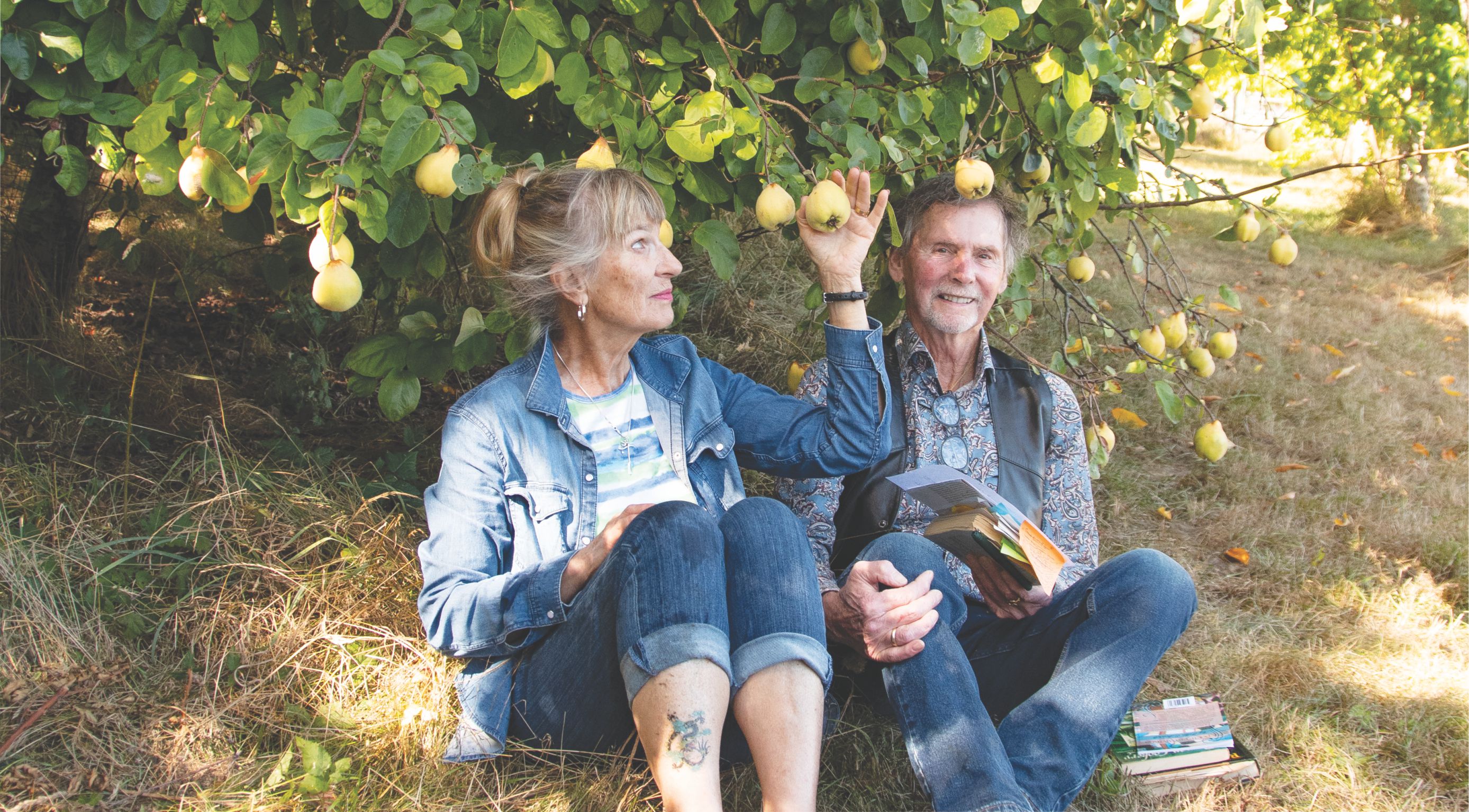
4 minute read
Cover Story
Growing Gold in Quinceotica
BY KERITH WADDINGTON
An ancient Middle-Eastern fruit believed to predate the apple is being grown in Cedar thanks to the chance encounter of a young man with a poem many years ago.
Quince is a hard, tart fruit that becomes sweet and tasty when cooked.

Although little known in North America, this sole member of the genus Cydonia has enjoyed popularity in the Mediterranean for three thousand years. It is most often turned into preserves and jellies, but it can be used in cakes, pies, stuffings and more.
John Edwards — poet, Oxford scholar and now local quince farmer — encountered lines by the ancient Greek poet Sappho in his 20s that so inspired him, he has grown the exotic fruit ever since: first on a small scale on Salt Spring Island and, more recently, on a much larger scale here in Cedar.
The poetic fragment that fascinated Edwards is known as 105 and dates from 630 BCE.
The scholar’s translation reads as thus:
As the quince that ripens last upon the highest branch Is forgotten by the harvesters. …
But no! Not forgotten but beyond their reach
The mythology of the fruit, alongside the poetic fragment, made a lasting impression on Edwards, who now has more than 200 quince trees growing on the 100-acre Cedar farm he tends with his wife, Gillian.
Edwards stresses that “with one exception, anything you can do with an apple or a pear can be done with a quince.”
And what is that exception?
“Eat them raw!” says Edwards with a laugh. “The flesh is so hard, it can break a tooth. Even the deer leave them alone!”
Some scholars believe that many references to fruit in ancient texts, including the “forbidden fruit” in the Garden of Eden, were probably referring to quince. Greek mythology associates the fruit with Aphrodite, the goddess of love, and many believe that the golden apple given to her by Paris was a quince.
If those stories have truth, a gaptoothed smile may have been the deciding factor in subsequent human history.
And where did the name “quince” come from?
“It is derived from the Greek name of an ancient village on the Island of Crete, Cydonia, where it was first described by the botanist Theophrastus, for Alexander the Great.”
One may well question what kind of market exists for this obscure fruit here on Vancouver Island. Edwards has sold quinces to Longwood brewery in Nanaimo for over six years, to Pacific Rim Distillery in Ucluelet for a seasonal liqueur made with local herbs, and to Bespoke Brewery in Parksville. John and Gillian also sell 10 to 20 pound boxes of quince at Quincotica Farm throughout October.
Edwards grows three different kinds of quince on the farm.
“We technically have two types here, the Champion and the Le Bourgeot. But because those trees were grafted onto the root stalk of a Provence quince, when a tree sends up shoots it sends up Provence!” exclaims Edwards. “I used to cut the shoots, but now I am letting them grow. It takes three to four years for a quince to mature, so I expect to be harvesting three types of quince by 2025.”
A late-harvesting fruit — quince ripen at the very end of September, first week of October and grow to about the size of a small grapefruit — Edwards looks forward to another crop coming soon.
His only regret?
“We pick it all by hand in a fortnight. And even with a large ladder, there is fruit I can’t reach.”
Sappho could relate.





